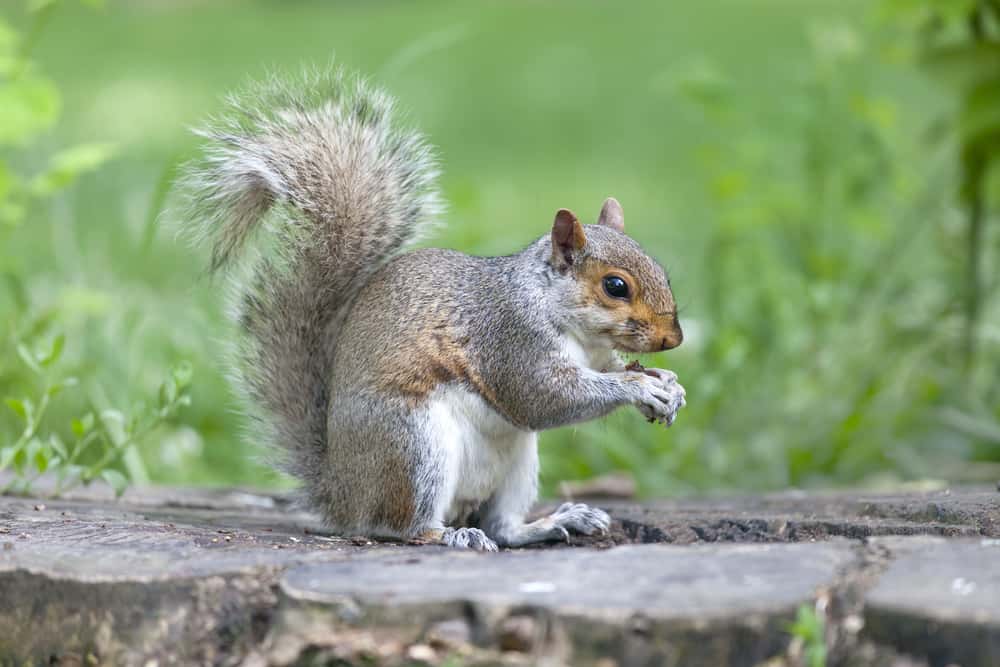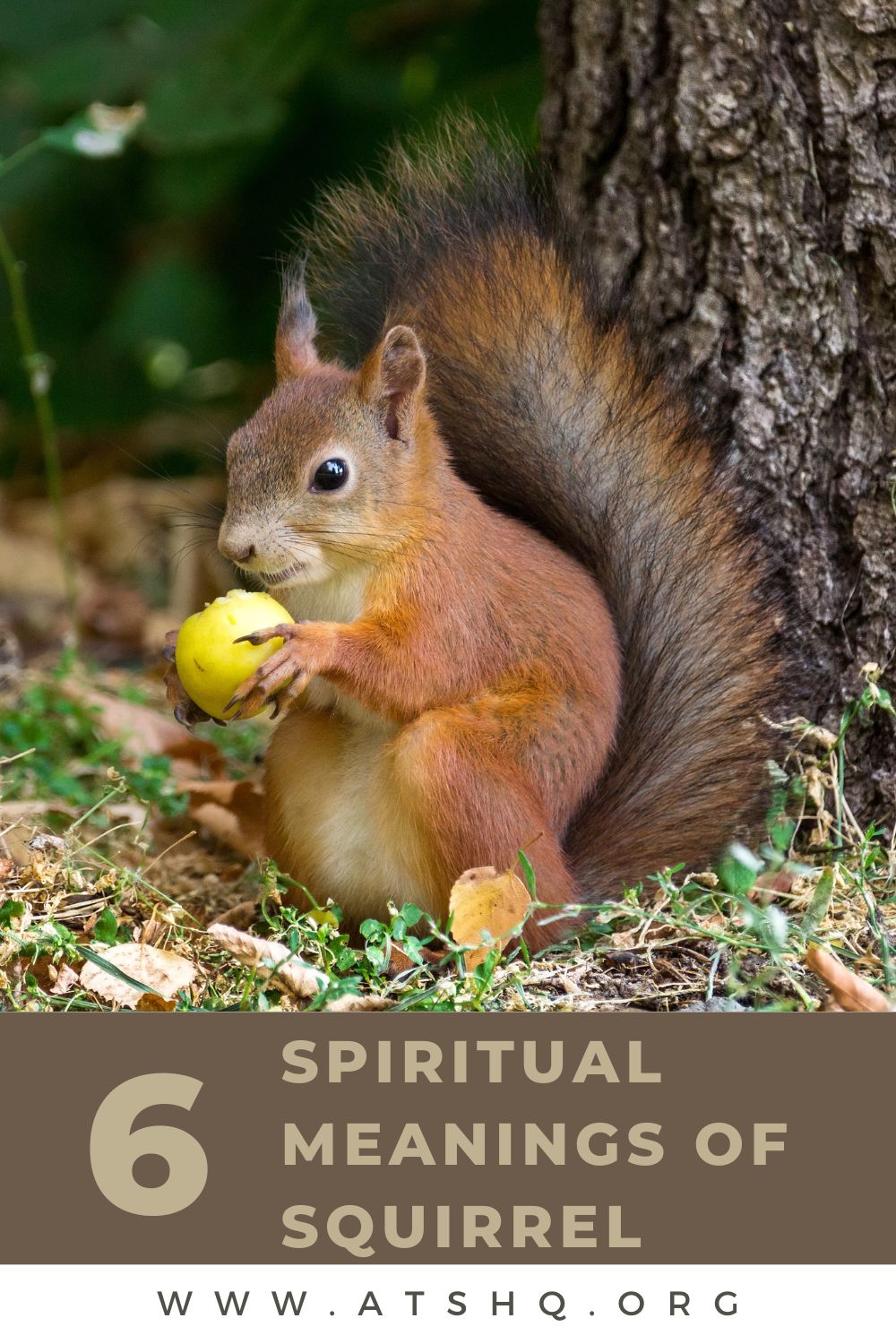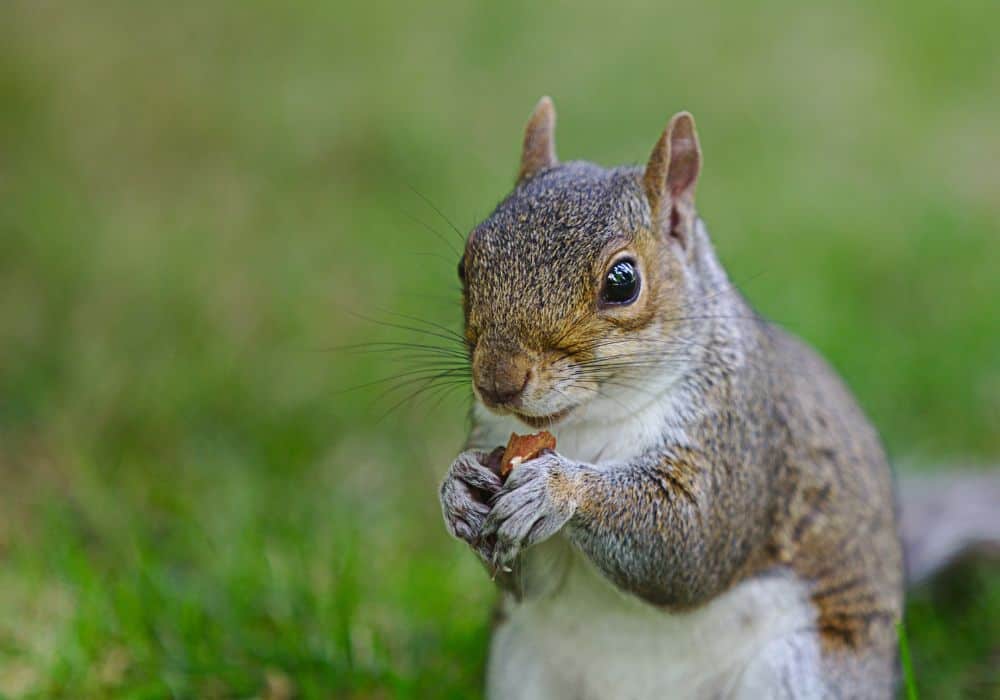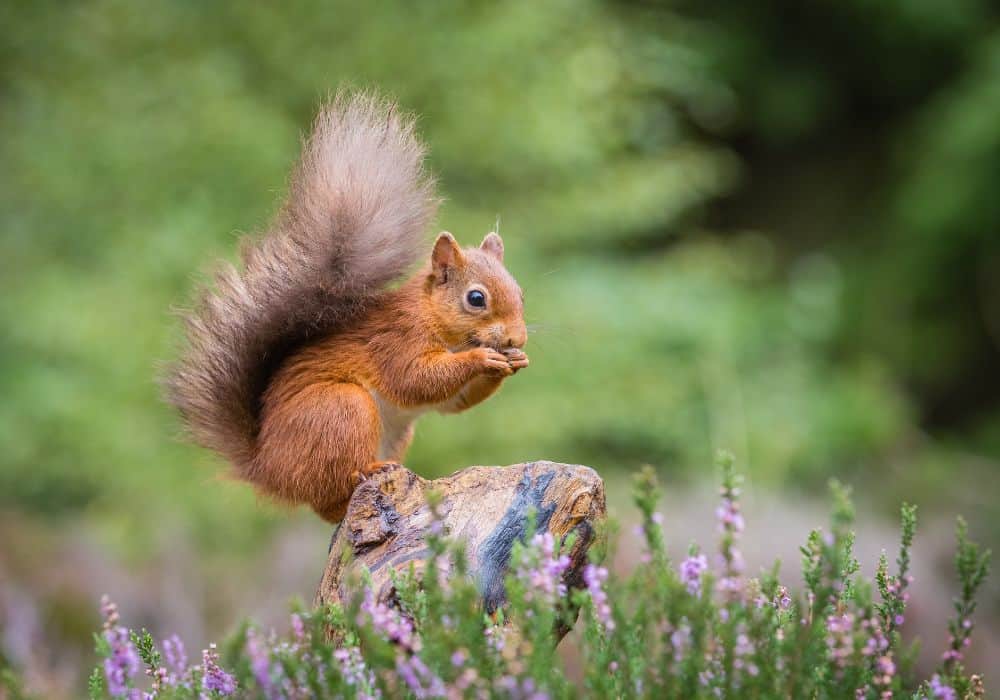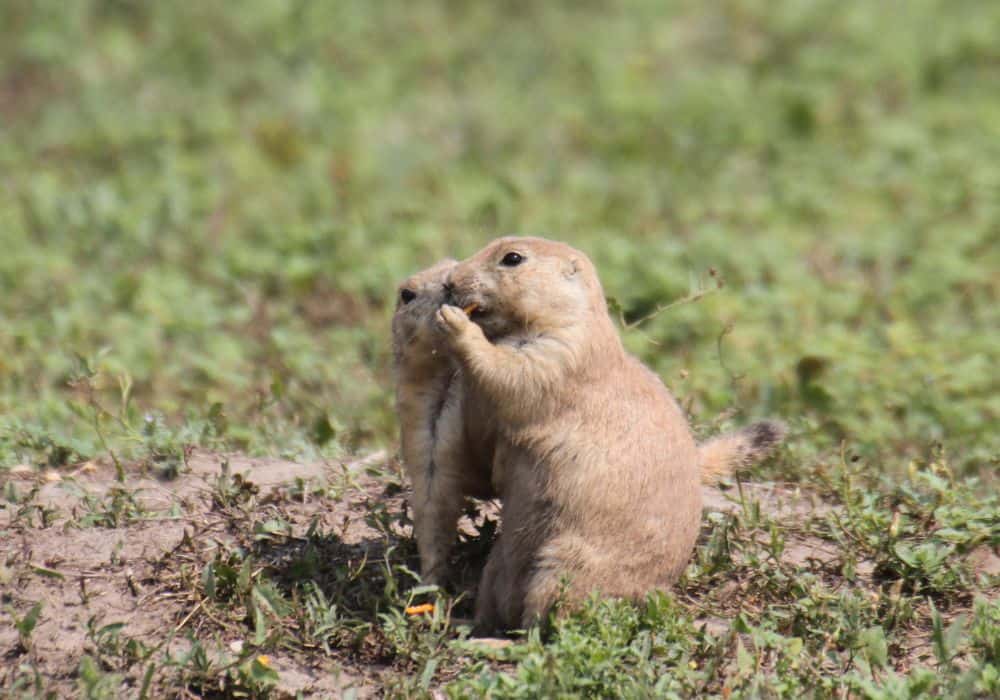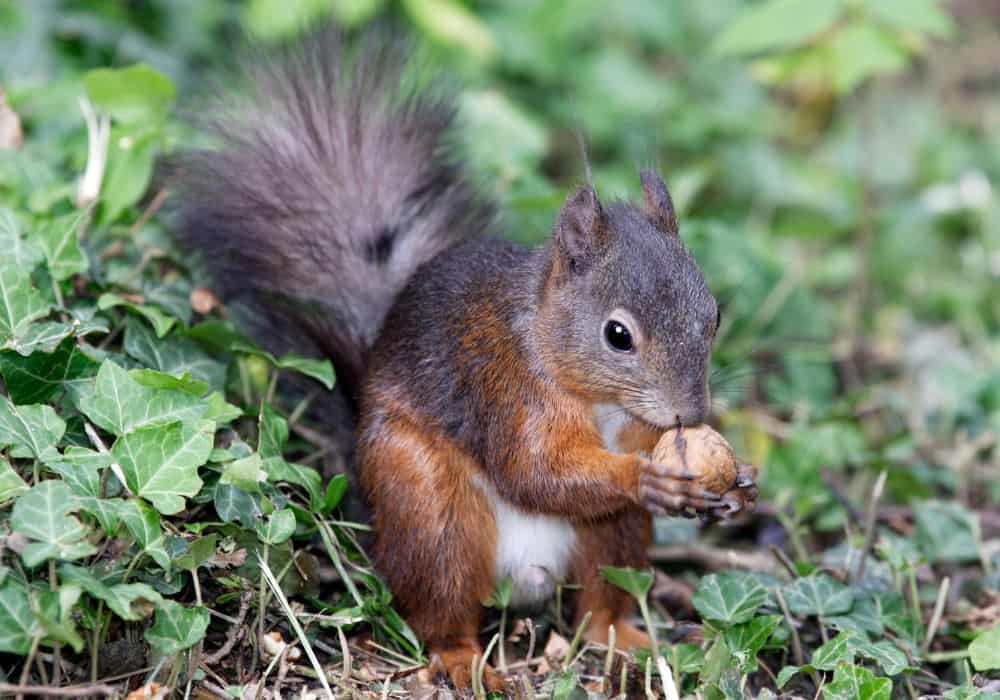Squirrels are some of the most resourceful and interesting survivors of the natural world. Despite – or rather thanks to – human urbanization of the land and deforestation of the earth, squirrels can now be found roaming our cities, chewing on our cables, and generally thriving in our surrounding woodlands.
But the history of squirrels goes back much, much farther than does that of humans. Once we cam onto the scene, we found a lot to love (and a lot to loathe) in these cheerful critters. We made up songs and stories about them, we attributed meaning and symbolism to them, and we even placed them at the sides of our gods.
What are squirrels?
When we think of ‘squirrels’, chances are our minds go immediately to the gray and red squirrels of the Old World and Americas.
These are, indeed, some of the most common and recognisable squirrels in the Western hemisphere. And yet, ‘squirrel’ is actually a term used to refer to an entire family of small-to-large rodents called ‘Sciuridae‘.
This family of mammal rodents includes other ‘squirrels’ like flying squirrels, chipmunks, marmots, prairie dogs and ground squirrels, pygmy squirrels and even giant squirrels!
Squirrel Appearance
The overall anatomy of a squirrel tends to remain fairly similar throughout the family Sciuridae, and yet there can be some drastic variations depending on environment and consequent evolution. For example, at first glance the American prairie dog seems to have little in common with the Indian giant tree squirrel. And yet, these two are very much related!
Characteristics which (generally) link disparate members of the squirrel community together include large, black eyes, soft fluffy fur and big bushy tails; four soft-padded feet each with four or five toes adapted to climbing headfirst down trees; two sharp incisors, and sharp claws.
Outside of these basic parameters, the appearance of squirrels can differ fairly widely.
Squirrel Distribution and Habitat
You’ll find squirrels in almost every type of habitat and on every continent imaginable, from the most humid rainforests to arid deserts and everywhere in between. The only places where you won’t find squirrels are in the extreme polar regions and the driest deserts.
Different squirrel species prefer different habitats, and depending on their makeup will live either predominantly in the trees, entirely on the ground (and in burrows), or a mixture of both. Perhaps most interestingly – as we’ll discuss in greater detail in just a moment – is how well squirrels have adapted to the intrusion of we humans into their natural environments.
Squirrel Habits and Diet
Squirrels are the animal kingdom’s equivalent of Doomsday Preppers. Because they cannot process the cellulose in green plant matter, they rely on a largely-herbivorous diet consisting of the following:
- Nuts
- Seeds
- Leaf buds
- Conifer cones
- Fruits
- Fungi
And in desperate times:
- Small birds
- Young snakes
- Smaller rodents
- Bird eggs
- Insects (some tropical squirrel species now subsist entirely off of insects)
Given the diet of squirrels, food is most scarce during winter and early spring. As such, they prepare for this annual ‘Doomsday’ by burying extensive and numerous caches of seeds, nuts, and other foodstuffs in summer and autumn, which they then recover come winter.
It is undoubtedly this preparedness which gave rise to the many positive connotations attached to these beloved little creatures.
Squirrels and Humans
Like pigeons and many species of gull and corvid, squirrels have adapted extremely well to the presence of humans.
There remain, of course, hundreds of species of squirrel which remain very much wild and prefer to stay outside the human realm. However, those which have adapted to city parks, streets, playgrounds, gardens, roadsides and rubbish dumps have even lost their innate fear of humans.
Squirrel Symbolism: The Spiritual Meaning of Squirrels
Most spirit animals and animal totems have a tendency to mean more or less the same thing across the wide range of indigenous and modern world cultures. Not the squirrel!
From trickster to omen of death, symbol of comfort, playfulness and relaxation, to messenger of the gods, spreader of gossip and spirit guide; from good fortune to bad luck and everything in between, the squirrel appears to have no one meaning to the people around it.
In this section, we’ll take a look at the many different symbolisms of squirrels, from the Vikings to Native American cultures. Let’s find out what lessons we can learn from this humble, sometimes chatty and precocious critter.
1. Ratatoskr the Norse Squirrel
With perhaps the best name of any mythological creature comes Ratatoskr, a mythical squirrel sacred to the old Norse of Scandinavia.
For the Norse, their universe was split into Nine Worlds (including their version of Earth, Heaven and Hell) balanced on the branches of a great tree planted at the center of the cosmos. This tree, Yggdrasil, was also home to some legendary beasts which kept watch over the various realms of the gods, giants, elves and people.
At the top was an eagle and a hawk, at the bottom, buried beneath a root, a great serpent. But between these deific beings the Vikings believed there had to exist a messenger of sorts, to relay warnings and messages of great import.
That, of course, was where Ratatoskr came in. Ratatoskr was a squirrel which clambered up and down the world tree passing on messages and generally keeping everything in order. The name itself means “tusk traveller”, most likely referencing both the squirrel’s two sharp front teeth and its ability to climb trees with impressive speed and accuracy.
Ratatoskr symbolises the faith and reverence the ancient Vikings held for the natural world, including for critters as small and seemingly insignificant as the common Eurasian red squirrel.
Today, you can play as – or alongside – the character of Ratatoskr in the video games God of War, Assassin’s Creed: Valhalla, Young Thor, and Smite.
2. Native American Prairie Dogs: Symbols of Rain, Corn and Foolishness
Prairie dogs don’t feature particularly often in the vast folklore of Native American tribes, but when they do, they carry a whole range of different squirrel meanings. In North America, there is one particularly rotund and curious squirrel which is not found anywhere else, namely: the prairie dog.
The prairie dog is so-called for its small-dog size and the fact that it lives in burrows and dens dug into the large, flat grasslands of the American Midwest prairies and Great Plains. Prairie dogs, though not considered especially tasty, have long served as a food source for nomadic indigenous peoples and travellers.
To the Cheyenne, however, they represent another staple foodstuff of North America: corn. As such, prairie dogs symbolized the harvest, bounty, and wealth to the Cheyenne, who celebrated them for it.
The Apache and Navajo often believed that the prairie dogs, who could sense when a rainstorm approached, had power over the water and rains. A power such as this would not go unnoticed by a people bound to the land such as these.
The Crow had a prairie dog clan (like a family unit) called the ‘Well-Off Prairie Dogs’, whilst some Sioux tribes performed a prairie dog dance, and used squirrel medicine for healing purposes and to restore the vitality of squirrel energy (presumably using parts of prairie dogs in the medicinal rituals).
3. Native American Squirrels: Caretakers of the Forest/The Black Omens
Chipmunks held even further symbolism for the Native Americans. These striped and delicate little nut-hoarders were viewed with a kind, yet suspicious, eye.
Squirrels were praised by many Native American tribes and clans as being alert, well-prepared, and astute caretakers of nature and the forest. To others, their aggressively noisy behavior was symbolic of chatter-boxes and gossip-mongers.
And then for some peoples a squirrel could be a terrible omen.
In the Choctaw nation, a black squirrel (in contrast to an albino white squirrel) symbolized the coming of the solar eclipse and all of the (understandable) evil which was traditionally associated with that monumental astrological event.
The Choctaw believed that black squirrels ate the sun come a solar eclipse, and so would make as much noise as possible to scare black squirrels away when one started (and until it had passed).
Regardless, there were always other tribes who viewed squirrels in a favorable light: such as the Menominee, whose pine squirrel clan was called Onawanik).
4. Christianity and the Squirrel Devil
For most of European history, squirrel meaning was obviously one of preparedness. To dream of a squirrel or take a squirrel power animal was to observe the need for frugality and wisdom in the face of predators or other adverse conditions.
In short, they were beloved by the Europeans who watched them stash away their food in the autumn and recover it during winter, much like humans did themselves.
But then something changed.
With the popularization of Christianity, and the Protestant Reformation leading to the complete revision of the entire Christian faith by preachers and followers alike, there too came a revision of the meaning behind squirrel encounters.
The fiery red coloration of many Eurasian squirrels, combined with a perceived ‘trickery’ in the squirrel’s nature, rebranded the lovable creature as an agent of the devil himself.
5. Celtic Symbolism, Shamanism and Queen Medb
The ancient Celts had an intense affinity for the natural world around them. Their places of worship were oak trees and stone monuments, their deities were either animals themselves, or represented by animals. In the wild forest country of Scotland, Ireland, Wales and England, the bright orange-red of the Eurasian red squirrel must have stood out bright as day.
Timid, curious, resourceful and playful, the Celts must have watched these squirrels as children, and marvelled at them as adults. It is perhaps no wonder, therefore, that the legendary Irish Queen Medb was often depicted with a squirrel and a bird on her shoulders (a lot like Odin with his two ravens).
The squirrel of Queen Medb helped her collect and disseminate information all across her kingdom, and so symbolizes communication and a passion for socialization.
6. West African Folklore: The Squirrel and The Spider
There is a moralistic story told in West Africa which pits the resourceful, hardworking spider against the opportunistic and thieving ways of a spider and crow, ultimately showing that hard work and perseverance will be rewarded in the end – even if they may be taken advantage of by others at times.
The story goes like this:
There was once a fastidious and tenacious little squirrel who decided to establish a farm for himself, so that he could be sure of food supply right throughout the long winter and early spring. Squirrel built himself a house, ploughed fields around the home, sowed the seeds of corn, and tended to them all winter.
When spring eventually came, the squirrel happened to leave his farm unattended in order to see to an errand or two. As always, he left by the treetops, as was his domain. Indeed, he had not seen any cause to build a path nor driveway leading up to the farm from the road, since he always travelled through the canopies.
Whilst squirrel was away, however, a mischievous spider and their family came upon the empty farm. With the corn crop just beginning to ripen to harvest, the spider decided to take the farm for itself. The spider and their family put a claim on the farm by building a road up to it (a sign of ownership according to the law of that land).
When squirrel returned, he found his farm stolen and his crop harvested, much to his chagrin and frustration.
Then came a day, however, that a great storm came and caused the spider family – on its way to market – to abandon its bushels of corn by the roadside and seek shelter. When they returned, a big black crow laid claim to the corn and carried it off, leaving the spider family with nothing.
Thieves themselves, they had been robbed, and knew what it was to have lost. The squirrel, who had been honest, good, and well-intentioned this whole time, was rewarded with being able to return to his farm and start anew.
Conclusion
‘Squirrel’ can mean many things: chipmunk, flying forest critter, ground dweller, burrower, tree-climber; resourceful, playful, ominous, fortuitous, powerful or inconsequential. There’s one thing for certain, however, and that’s that wherever you find yourself on earth – in the jungles, the forests, the desert dunes, on the windy plains, by rivers, atop mountains, in caverns or the wide open, you’re bound to run into someone with a story to tell about a furry little creature living nearby.
